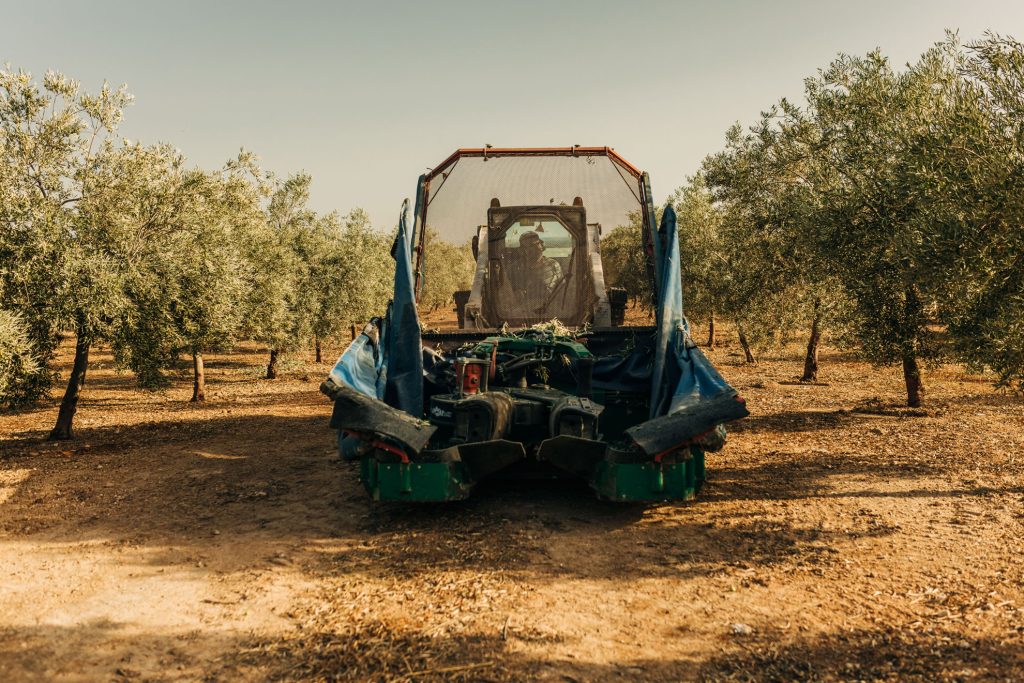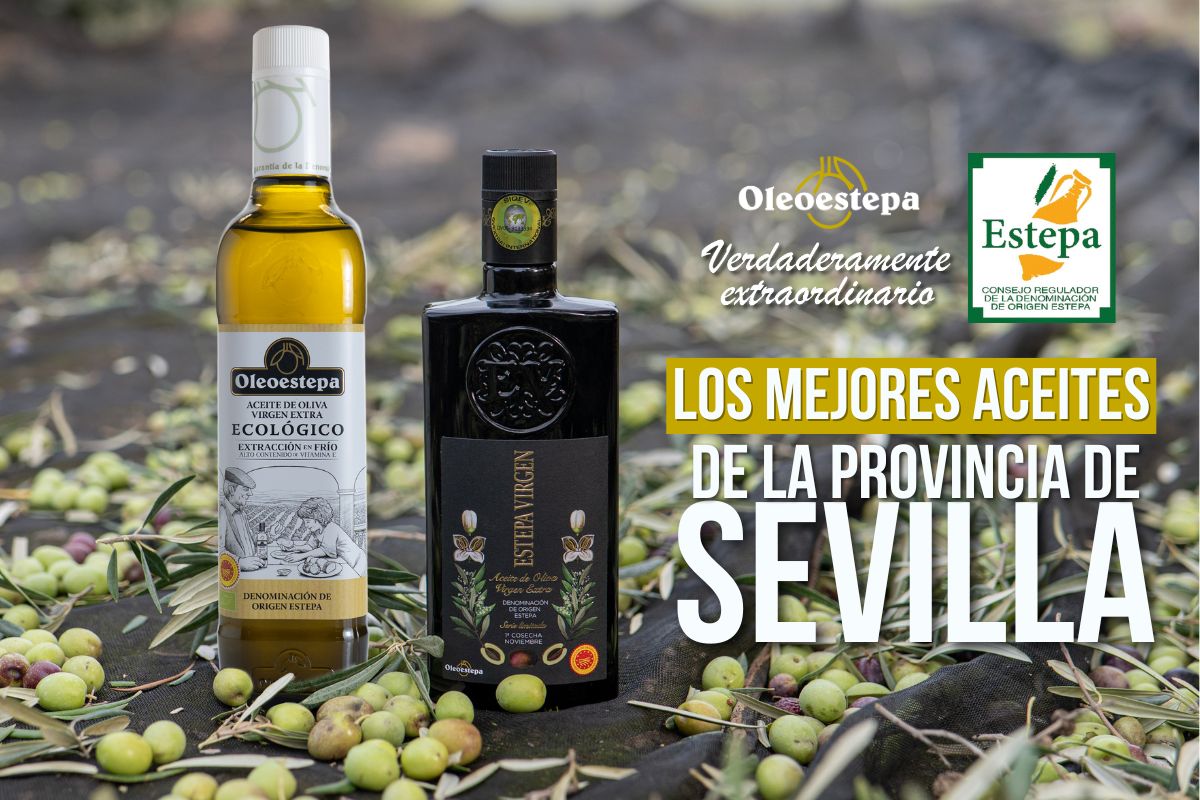Current olive harvesting methods have changed greatly in recent years. The incorporation of new machinery has facilitated the work of harvesting, allowing a greater quantity of fruit to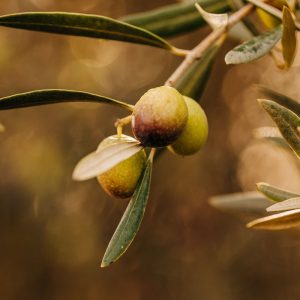 be obtained in less time.
be obtained in less time.
This increase in productivity not only depends on the machinery, but also on the relief of the land where the olive grove is located and the type of plantation. The following is a summary of the main current harvesting methods used to obtain the different varieties of olive oil.
The olives are harvested annually and must be harvested at the moment of optimum ripeness so that the best juice, extra virgin olive oil, can be obtained.
It is ideal to harvest early, that is, when the olives are in veraison (between green and purple). It is then, if it is not affected by pests, when it offers its best organoleptic properties, when its fruity attributes are more accentuated.
This ideal moment is also influenced by weather conditions, and harvesting can be significantly delayed by a period of rain or high temperatures, which prevent cold extraction of the olive oil, which is essential to maintain its organoleptic properties.
Once everything is ready, the harvesting activity arrives to the olive grove and can be carried out in the following way.
Milking
Traditional method for the harvesting of olives destined for table olives. They use ladders to access all parts of the olive tree and harvest the fruit manually with the help of bags hanging from the shoulder, called “macacos”. Although the olives are harvested with minimal damage, it is a slow and labor-intensive process. In a very marginal way, this tool is also used to produce extra virgin olive oil in small and family-run olive groves.
Tilling
This is the traditional method of harvesting olives for olive oil, and is still the best known and most widely practiced today. On a mesh, canvas or large cloth that covers the entire surface of the olive tree, the harvesters hit the different branches with a stick or long stick, causing the olives to fall on the canvas.
In the past, these sticks were made of wood, but the invention of new materials such as fiberglass has significantly reduced their weight and, consequently, greatly facilitated this work.
Although this system is faster than the previous one, it is necessary to know how to do it because otherwise there is a risk of damaging the olive tree.
Once the olive tree has been trimmed, other harvesters collect the canvas with the olives and place them in a basket pulled by a tractor, which will take them to a larger trailer on the edge of the olive grove waiting to be filled and taken to the mill.
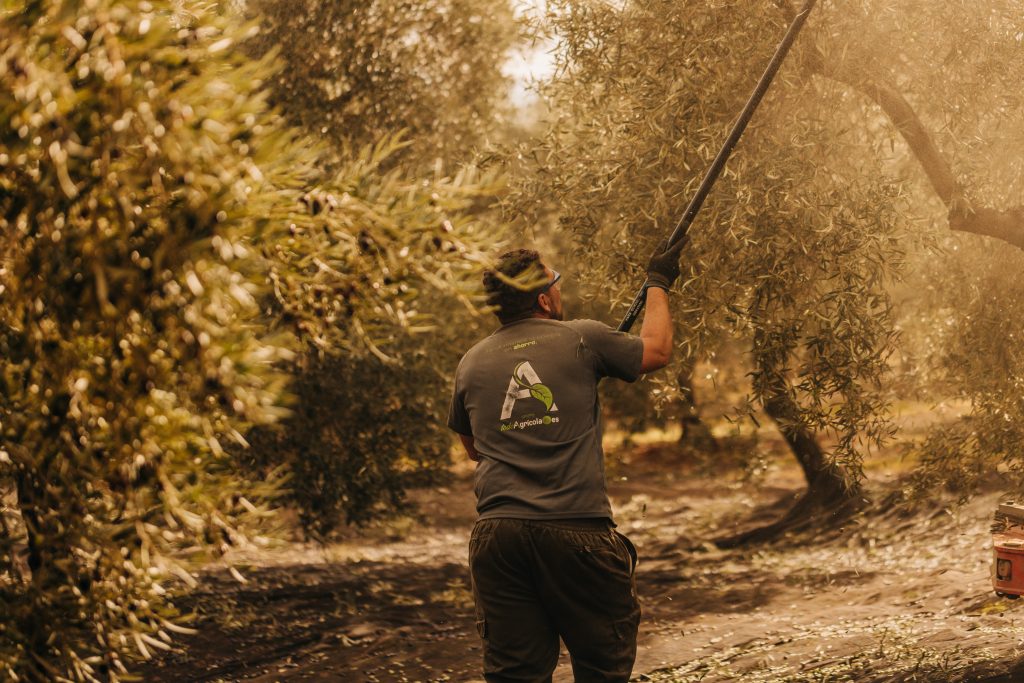
Mechanical harvester
The system is similar to the previous one in terms of the use of canvases or meshes on the ground covering the olive grove, with the only difference in the harvesting tool. In this case they are mechanical type harvesters in the form of a rake or comb, which thanks to its electric or gasoline engine, is introduced into the branches of the olive trees achieving easier and faster the fall of the olives on the canvas.
In addition to the greater speed, it is lighter than the stick, making the task easier for the harvester.
Mechanical trunk vibrator
This method of mechanized harvesting consists of the use of a clamp articulated by a tractor that embraces the trunk of the tree and shakes it for several seconds, causing the olives to be released from the branches.
This system is usually a complement to the mechanical shakers that make a quick review of all the branches of each olive tree, thus guaranteeing a complete harvesting of the olives.
Mechanical trunk shaker with umbrella
This system is a variation of the previous one, since an inverted canvas is incorporated to the clamp that completely surrounds the olive tree, recovering the fruit without it even touching the ground, passing to its unloading in a trailer or truck for its subsequent transfer to the oil mill.
This type of harvesting is used in plantations with no or little slope, and with single or two-foot olive trees, both traditional and intensive. The cost is lower than in completely manual harvesting and quite efficient in terms of the percentage of detachment, also achieving an optimization of fruit delivery, both in time and in freshness and blemishes.
However, the efficiency of this system is very much determined by the variety of olive grove, since not all varieties of olives detach easily. The incorporation of this machinery makes this system common in large farms or farms managed by agricultural companies.
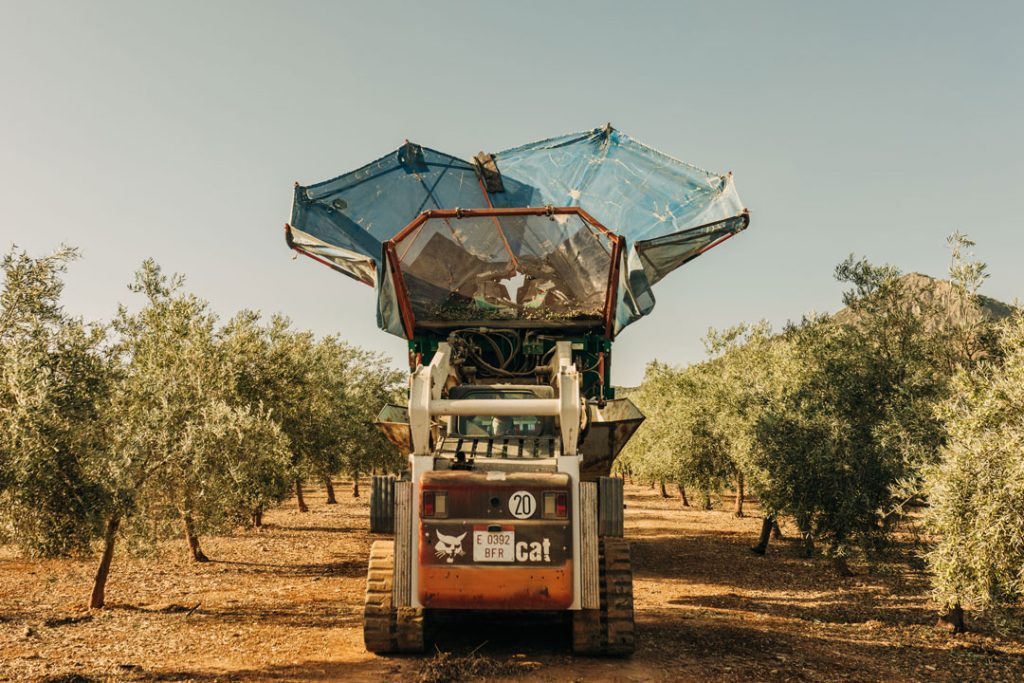
Harvester
This is the usual system in super-intensive plantations, where the olive trees are placed in continuous rows in the form of a hedge, which allows the use of automatic inverted u-shaped harvesters, capable of carrying out a complete mechanized harvest without the need for manual labor, since the olives are placed directly in trailers by means of conveyors.
It represents a very important saving in harvesting costs, but its application is limited to this type of plantations and to specific varieties.
How it is harvested in Oleoestepa
In the more than 70,000 hectares of land that make up the 19 associated olive mills, there is a forest of millions of olive trees. It is a large area with very diverse orography, availability of irrigation and size of plantations, key factors in determining the most efficient harvesting system.
However, there is a common link: the commitment to environmentally sustainable cultivation, obtaining a healthy fruit, harvesting it at the optimum moment of ripeness, at veraison, and delivering it as quickly as possible to the associated mills, where the latest technology awaits to optimally extract its juice.
